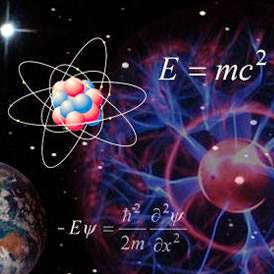I’ve posted on this elsewhere: “
Old Tapes”; “
BWB”; “
Self-Portrait.” I’ve changed my Facebook profile photo to Trayvon, and spoken with my sons. Let me explain:
In “Old Tapes,” I revisited an incident in which I was forcibly frisked by a store detective. He didn’t care if I had a microscope, a telescope, a tool kit, a chemistry set at home, physics and science books nor did he ask if I had a complete set of the Encyclopedia Britannica. No, I was a suspect for shoplifting for merely combing my hair: guilty until proven innocent. “BWB” was an admittedly emotional response directly to the absurdity of a teenager losing his life over his dress, an iced tea and skittles; “Self-Portrait” was written earlier, but reflected the same concerns.
In
Nanos Gigantium Humeris Insidentes, I did describe my background a bit, but not so the photo. I became Brigade Commander of Winston-Salem/Forsyth County Schools '79 - 80 on the negative answer to what I thought was a rhetorical question to the Commander for the ’76-77 school year:
“what would it take for someone to rise to your rank?” His answer was specifically addressed (to my ethnicity and potential):
“Your kind will NEVER get to this rank!” (Never) say never: the complete irony was he went in an enlisted, I an Air Force officer. We saw each other on active duty at Bergstrom Air Force Base in Austin, Texas.
He had a Constitutional obligation to salute me.

Women and men of a certain age in my culture can trace back to when we lived in humble conditions on a segregated side of of our respective towns, I recall numerous times when the sight of drug dealers and runners; switch blades, kitchen hatchets (both directed at me) or guns threatened our lives. Despite these challenges, many of us went to college – HBCUs, Ivy League, Graduate Schools – and attained degrees for a better life. Our parents, and leaders of the Civil Rights movement (like my sister) inspired us to do this.
Tony Morrison said:
"In this country American means white. Everyone else has to hyphenate." So, I am classed as African-American because Negro/Black wasn’t definitive enough for Malcolm X. As he went on his own pilgrimage of self-discovery to Mecca, he coined “Afro American,” founding the Organization of Afro American Unity (dissolved after his assassination). Reverend Jesse Jackson is credited as the source of “African-American,” since as a fellow engineering student from
A and T pointed out:
“there’s no such country as ‘Afro.’” And to be sure: Africa is a continent of
53 different nationalities, as diverse as this nation in cultures and ethnicity.
Yet, all this effort towards equity, to “pull ourselves up by our own bootstraps,” we as our parents must have “the talk” with our male sons, how to behave in public, how to talk to the police if stopped, how not to appear “a threat.” Yet, I still get quick looks when I get on an elevator, shifted purses, I must put others at ease; apologize when professionally embarrassed in email. Guilty until [I've] proven [myself] innocent...
I AM: the father of two statistics:
The risk of dying from homicide among non-Hispanic black male teenagers (39.2 per 100,000 population) is more than twice that of Hispanic males (17.1 per 100,000 population) (Figure 4) and about 15 times that of non-Hispanic white males (2.6 per 100,000 population);
at current levels of incarceration a black male in the United States today has greater than a 1 in 4 chance of going to prison during his lifetime, while a Hispanic male has a 1 in 6 chance and a white male has a 1 in 23 chance of serving time. That has nothing to do with their locale (suburbs); nothing to do with my education, their education or career choices. It is the aftermath of what historians tastefully describe as “the peculiar institution,” of the antebellum South, as with South Africa’s Apartheid, based on pigmentation, its wages and legacy. What happened to Trayvon is the unspoken nightmare; the uttered prayer each night, Psalms and Glossolalia. We do not have the luxury, or security to be blithely skeptic or agnostic. The slaughter of male children by Pharaoh and Herod are not biblical illustrations, but an evidential, everyday concern.






























